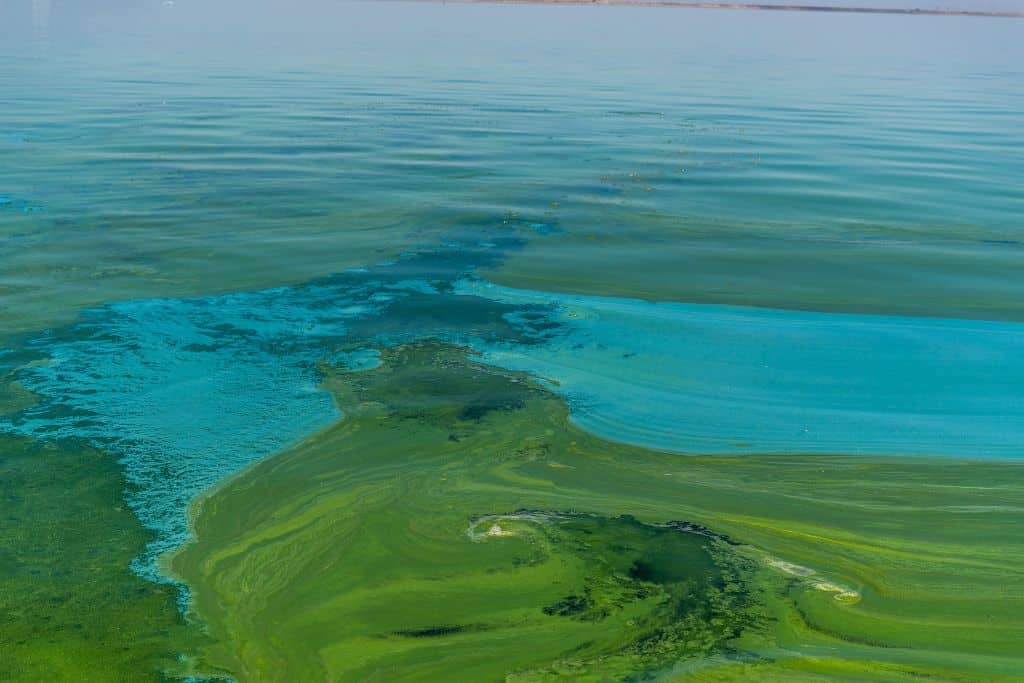Sick and dying sea lions and dolphins are appearing on Southern California beaches. The marine mammals are suffering from domoic acid toxicosis, the consequence of an algal bloom associated with rising ocean temperatures. Although domoic acid is a naturally occurring toxin, in high enough quantities it can make humans and marine mammals sick. As ocean temperatures increase, the world is likely to experience a rise in hurricanes, coral bleaching, and toxic-related illnesses.
—
This summer across the world, temperatures are breaking new records. In Phoenix, Arizona, a record was set on July 18. The city experienced 19 consecutive days with daytime temperatures of more than 110F (43C). On the coast of Florida, water temperatures were breaking records, too. According to meteorologist and journalist Bob Henson, “they are off the scale of the color contours on some weather maps.”
By June, water temperatures had become dangerously high in Southern California. Hundreds of sick and dying sea lions and dolphins began appearing on its beaches. The marine mammals were suffering from a toxic algal bloom associated with warmer ocean water temperatures. Higher than normal temperatures are linked to high levels of domoic acid, a naturally occurring toxin that can make humans and marine mammals sick.
Domoic acid is associated with a rise in the single-celled plant Pseudo-nitzchia. Blooms of the plant are often referred to as red tide. Crustaceans like crabs and lobsters as well as fish ingest the plant. When they are eaten by humans and marine animals, domoic acid poisoning may occur. Symptoms appear after as little as 30 minutes or up to 24 hours after ingestion of the tainted tissue. Symptomatic of milder cases of domoic poisoning are vomiting, diarrhea, and abdominal cramps. In more severe cases, victims experience difficulty in breathing, cardiovascular instability, and seizures.
The first diagnosed case of domoic acid toxicosis in California sea lions was made in 1998 at the Marine Mammal Center, a preeminent marine mammal rescue facility based in Sausalito, California. Domoic acid attacks the sea lion’s brain, causing seizures and, in some cases, even heart failure. When treatment is administered early enough, the infected animals are likely to recover before significant physiological damage occurs. Domoic toxicosis also has been reported in other species of sea lion, seals, dolphins, and larger whales.
Trends in rising sea surface temperatures along California’s coast are not unique to that state. Data from 1991 to 2015 shows that Oregon, the state just north of California, has also experienced a rise in ocean temperatures. During the five years when the highest levels of domoic acid were detected in razor clams (Siliqua patula), researchers noted that this coincided with the warmest ocean conditions.
The consequences of warm ocean temperatures extend beyond domoic acid toxicosis. Other impacts include coral bleaching with concomitant declines in fish populations and the loss of coastal protection from damaging wave action and a decline in local economic benefits. Rising water temperatures also increase the potential for more powerful weather systems and predictions for increased frequency.
The National Oceanic and Atmospheric Administration (NOAA), the US federal agency tasked with understanding and predicting changes in climate, weather, ocean, and coasts, estimates that about “40 percent of the world’s oceans are currently facing a marine heat wave.” It is the highest percentage on record that has been attributed to human-caused climate change.
Matthew Hunter, a researcher at the Oregon Department of Fish and Wildlife summed up these findings. His biggest takeaway is that ocean temperatures are changing and these changes have significant implications for all natural resources and human health.
You might also like: World Records Hottest June in History Amid Historic Heatwaves and Extreme Ocean Temperatures


















